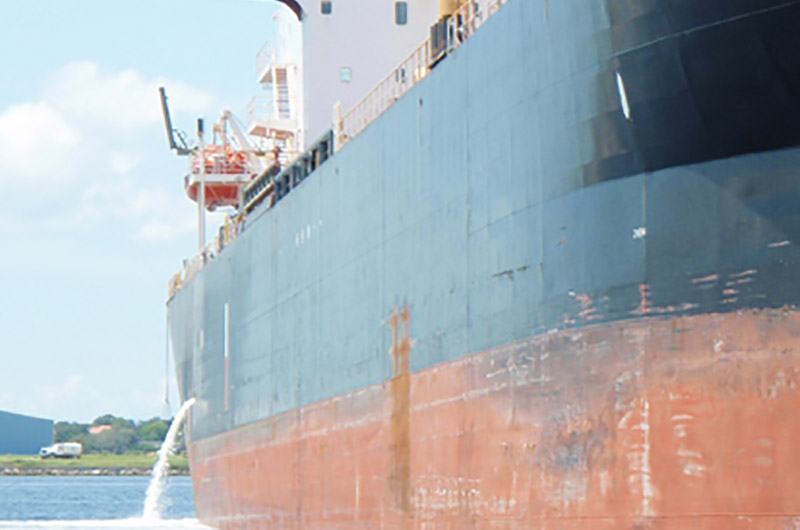The Optimarin AS ballast water management system officially became the first Coast Guard-approved method for U.S. waters Friday.
 “While this is a significant milestone, it is the first of multiple system approvals that are needed to mitigate the threat of harmful aquatic invasive species,” said Rear Adm. Paul Thomas, assistant commandant for prevention policy, in announcing the formal decision. “One size does not fit all, so we will continue to evaluate other systems submitted by multiple manufactures with the intent to provide options that meet shipping’s varying needs.”
“While this is a significant milestone, it is the first of multiple system approvals that are needed to mitigate the threat of harmful aquatic invasive species,” said Rear Adm. Paul Thomas, assistant commandant for prevention policy, in announcing the formal decision. “One size does not fit all, so we will continue to evaluate other systems submitted by multiple manufactures with the intent to provide options that meet shipping’s varying needs.”
Norway-based Optimarin uses filtration as a pre-treatment when vessels are taking on ballast water, combined with high doses of ultraviolet irradiation to kill or render non-viable marine microorganisms, bacteria and viruses.
Optimarin promotes its technology as one of the few treatment options that do not require use of chemicals or biocides for its treatment and cleaning cycles. The system is offered in sizes and configurations that can be delivered on a pallet or installed in various machinery spaces.
“This morning the Coast Guard called us and sent us the actual certification,” said Birgir Nilsen, vice president of business development for Optimarin. “It’s been very impressive. We submitted our final documents in early September, and they responded before the 30 day period was up.”
The Coast Guard came back with more questions as to the system’s scalability, environmental aspects and others, and then “we got the word last week,” Nilsen said at the International WorkBoat Show in New Orleans.
“We’ve had people coming up unsolicited to congratulate us,” said Richard A. Russell, president of Ocean Power & Equipment Co. Inc., West Caldwell, N.J., the Optimarin agent in the U.S.
Since 2009 Optimarin has sold some 500 treatment systems worldwide, with 300 installed so far, Nilsen said.
“Our approach is to work with fleets, sign fleet agreements,” Nilsen said. The Coast Guard is likely to certify two other manufacturers’ systems in the near future, so it is likely U.S. operators will start to make decisions about equipping their fleets, he said.
Installed costs for treatment systems vary widely by where the work is done. One large sale for bulk carriers in China worked out to around $100,000 per vessel, “but for Europe it might be twice that, three time in the U.S.,” Nilsen said.
“People are forming their own rules of thumb” for estimating costs, Russell said.
One key factor: installing a system during regular dry docking can be accomplished in the same time frame as getting all other work done, Nilsen said: “The installation in drydock should not go beyond the drydocking time.”
The Coast Guard approval had been widely expected since summer 2016. While other systems are waiting in the wings for approval, the Coast Guard said vessel owners and operators have other ways to comply with U.S. ballast water management regulations, including:
- Temporary use of a foreign type-approved BWMS that has been accepted by the Coast Guard as an alternate management system (AMS) (five-year limitation) if installed in compliance with 33 CFR Part 151.
- Use of ballast water obtained exclusively from a U.S. public water system.
- Discharge of ballast water to a reception facility.
- No discharge of unmanaged ballast water inside 12 nautical miles.





